Experts warn against these 6 bathroom flooring mistakes - what to do instead
Here are six mistakes to avoid making before you get your bathroom floor fitted

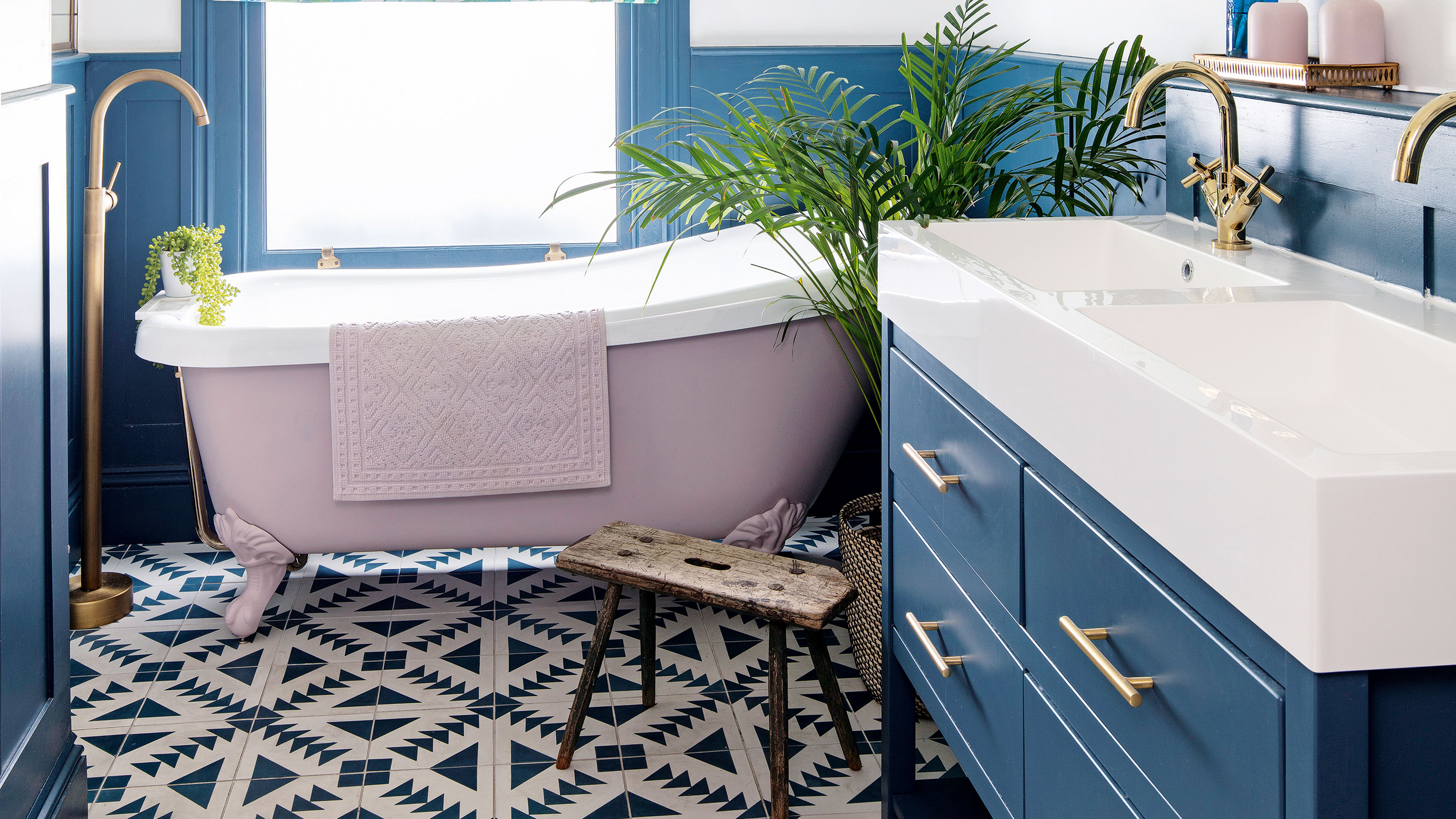
A good bathroom floor is key to a well-functioning, stylish bathroom. It should complement the room's aesthetic, whilst being easy enough to keep clean and in good condition for years to come. If this is what you're hoping for as you look for new bathroom floor ideas, then there are some common bathroom floor mistakes you should be wary of.
The most common bathroom floor mistakes are easily done, but things that many homeowners will come to regret. Getting a new bathroom floor fitted isn't a cheap project, so if you want to invest your money wisely and still be reaping the benefits in 10+ years, you'll want to avoid the common bathroom floor mistakes on our list.
'Ultimately, the choice of flooring you decide for your bathroom is a personal choice,' says Barrie Cutchie, Design Director, BC Designs. 'But there are a couple of options that have many more disadvantages than other options.'
Common bathroom flooring mistakes to avoid
So that you don't have to waste your money and suffer with a poorly chosen bathroom floor, we've asked the experts what the most common bathroom flooring mistakes are, and what you should do instead. If you avoid the six mistakes on our list, you'll still be thanking yourself in years to come.
1. Getting carpet fitted
Carpet in the bathroom might have once seemed like a good idea in decades gone by, but the current general consensus is to leave it out of bathrooms altogether.
'Where toilets are concerned, carpets can be an unhygienic choice as they cannot be cleaned or disinfected at the same level as other floor options,' explains Barrie. 'There is also a lot of water around and carpets can quickly become sodden and take forever to dry, while there is also a risk of mould building up.'
If you still want to feel soft textures under your feet, add a nice fluffy rug on top of your hard flooring. Or if you're firmly on the other side of the bathroom carpet debate and have your heart set on it, there are carpets specifically designed to work in the bathroom, but they'll be a little more pricey. 'Bathroom carpets designed with a waterproof backing, making it practical for this particularly wet room,' says Jemma Dayman, Hard Flooring Buyer, Carpetright.
Sign up to our newsletter for style inspiration, real homes, project and garden advice and shopping know-how
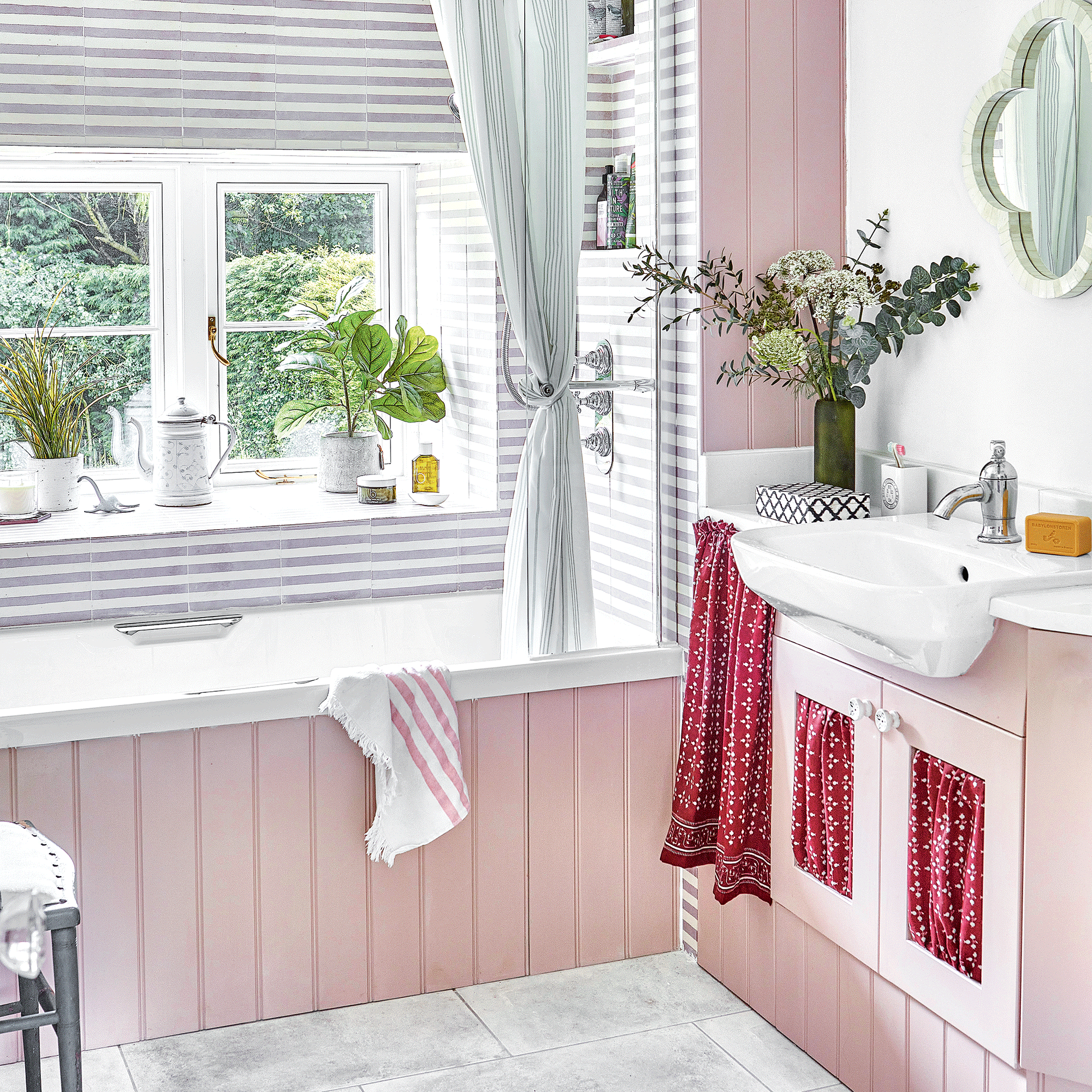
2. Laminate flooring
Laminate flooring is one of the most common bathroom flooring mistakes homeowners will make, as it may seem like one of the easier materials to maintain. But the experts have highlighted that laminate floors do not fare well in damp conditions, which is why they should be avoided in the bathroom, particularly in small bathroom ideas.
'Laminate floors are typically are not great with water,' says Barrie, BC Designs. 'They require spills to be cleaned immediately or they risk swelling and warping.' Even if you cleaned your floor regularly to stop it from holding water, it would eventually start to peel in places. Look for water-resistant options instead, such as ceramic or porcelain tiles. These will fare much better in the bathroom and you won't need to replace them after a few years time.
3. Natural stone tiles
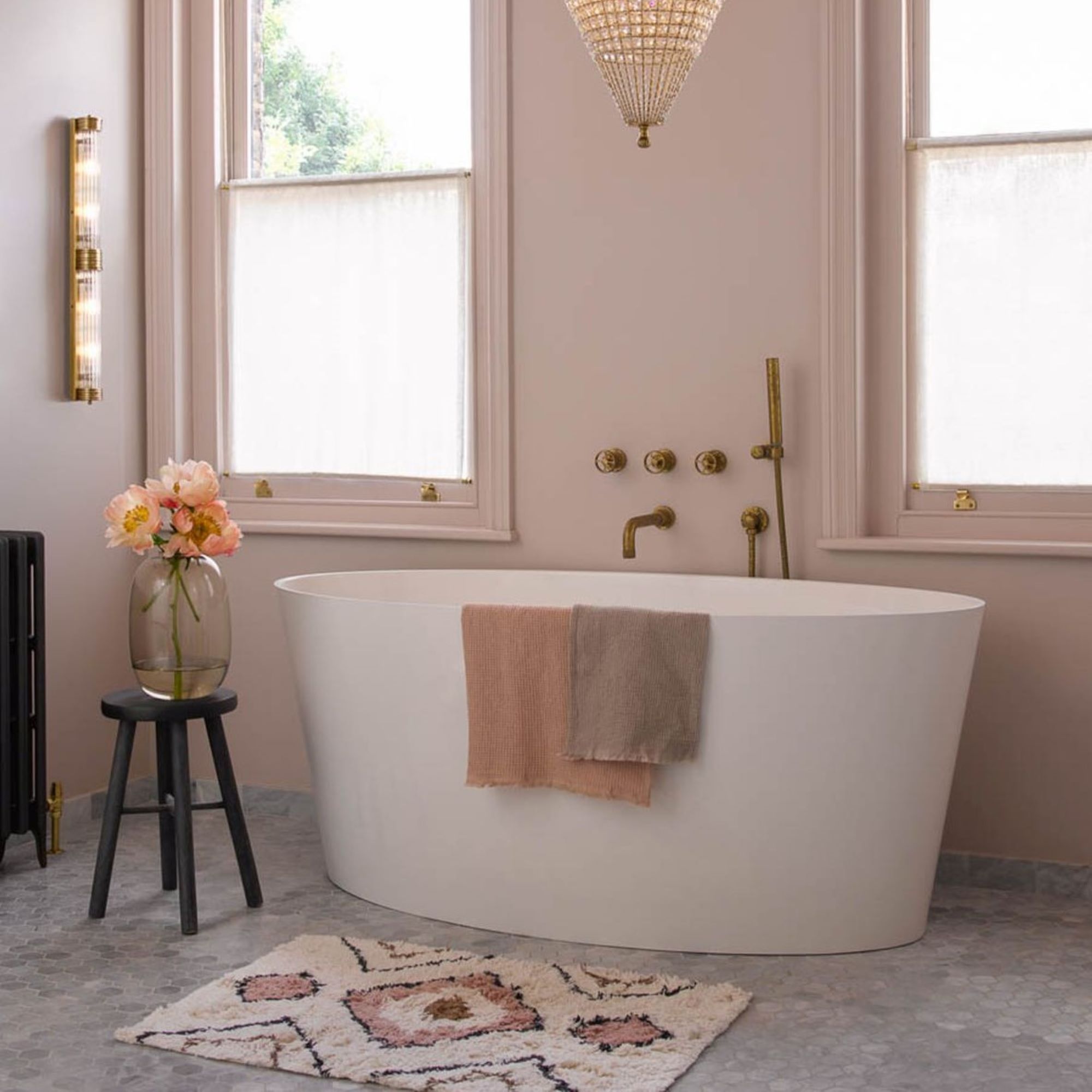
It's no use going for floor tiles if you're going to choose the wrong type for your bathroom floor. Despite giving a rustic, earthy feel to the bathroom which is desired by many, natural stone tiles will cause a lot of hassle further down the line, so it's best avoided.
'While natural stone tiles might have aesthetic and thermal benefits, they’re much higher maintenance and less robust than other materials, making them a costly choice,' says Martin Winterburn, Marketing Manager, Total Tiles. 'They’ll absorb the water and soften over time. Limestone and sandstone tiles can be very porous and require several coats of sealer.'
The experts recommend ceramic or porcelain tiles instead, as these are hard-wearing and won't show water damage. Or if you're really keen on getting natural stone tiles fitted, make sure to get them sealed, which will at least help keep water at bay.
4. Engineered wood
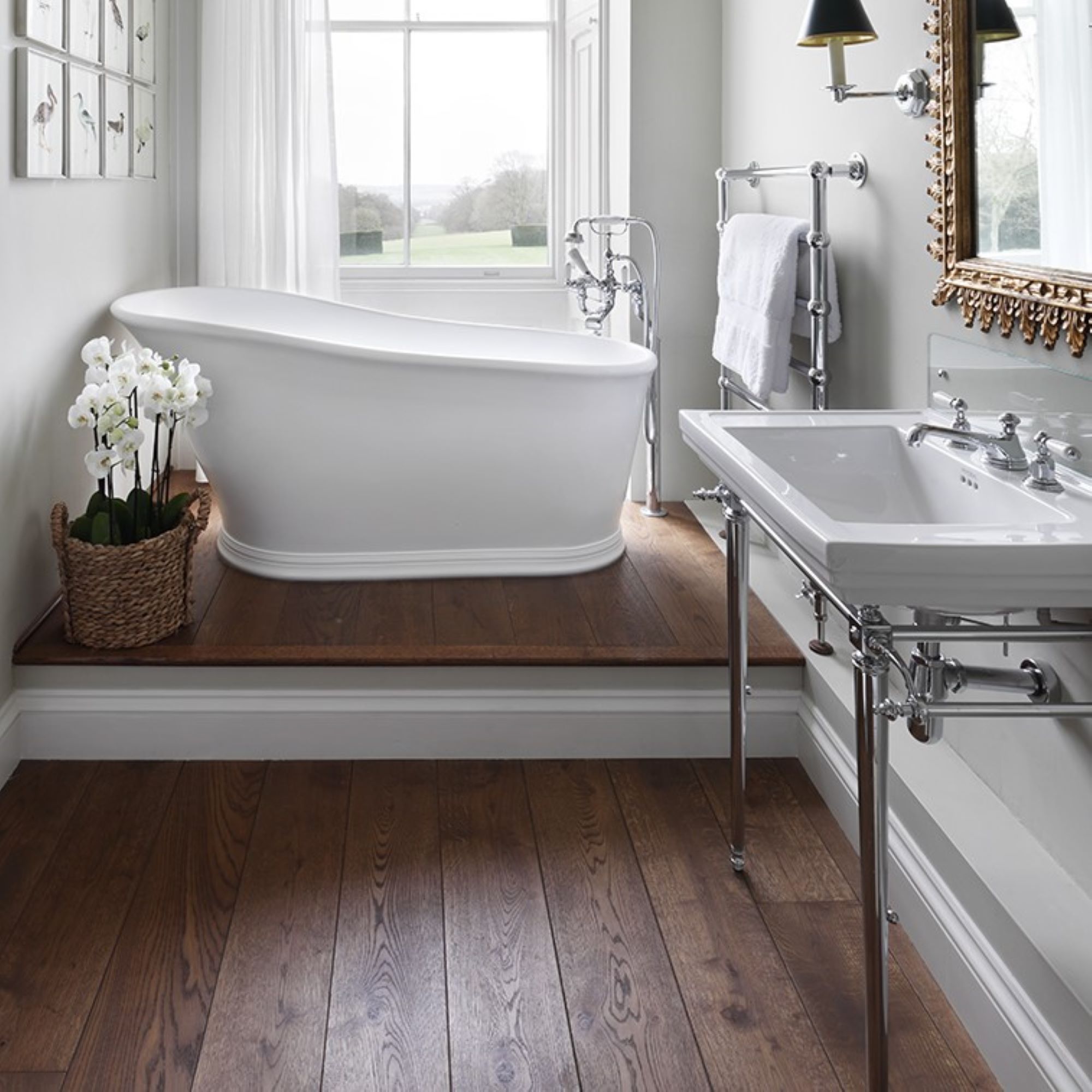
Next on the list of bathroom flooring mistakes to avoid is engineered wood. Engineered wood is made of high-quality plywood core with a thin layer of hardwood flooring on top, but not all of its layers are good at resisting water.
'While engineered wood does have real wood layers at the top, you have to ensure it is fully sealed as well,' explains Barrie. 'Often the material underneath the wood layers is not waterproof or even water-resistant.'
The last thing you want in your bathroom is for the floor to start rotting from underneath, which engineered wood will start to do over time. To avoid this, consider sticking to bathroom tile ideas, as aside from looking great, they are super durable and will stay in good condition long-term.
5. Playing it safe with tiles
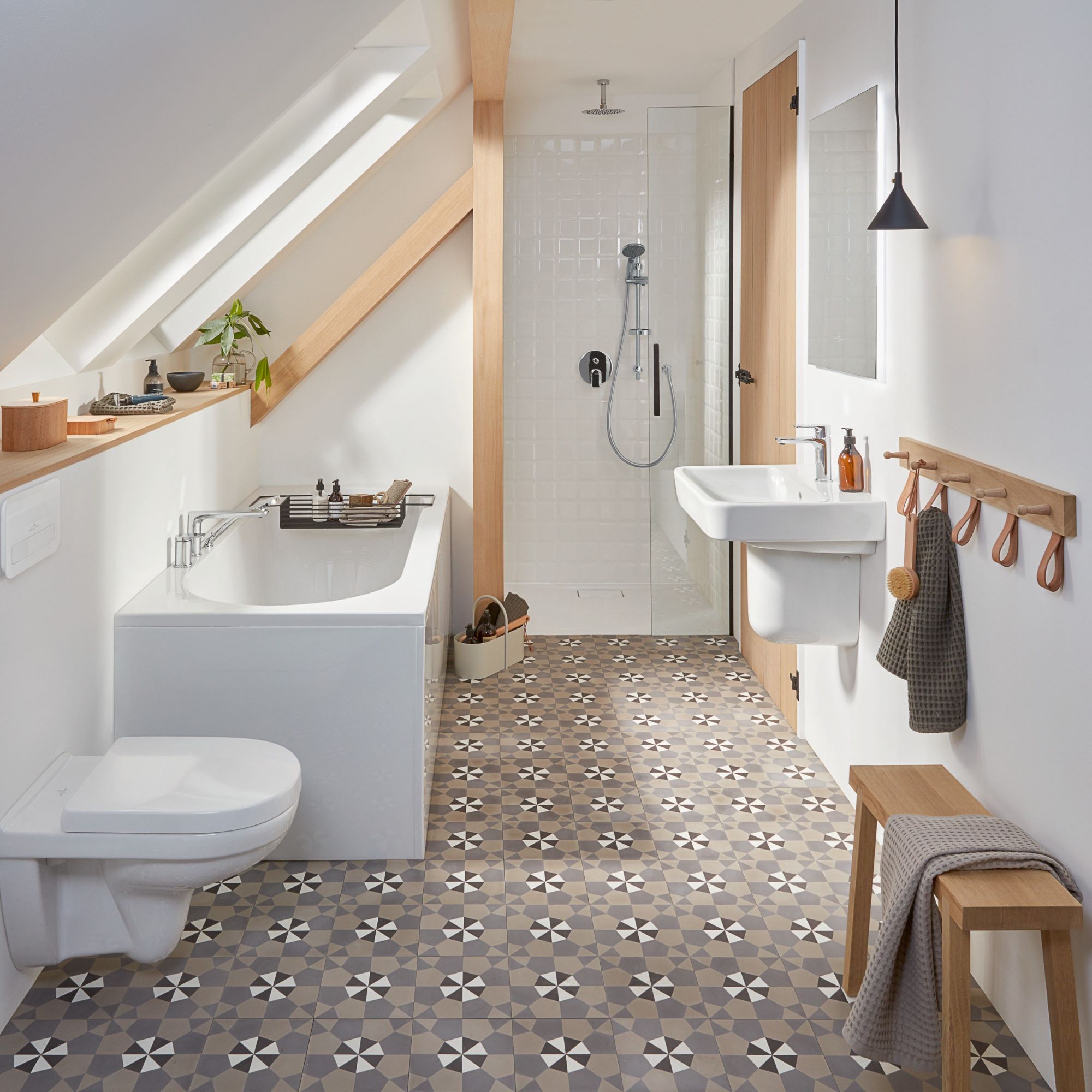
While it's true that white bathroom tile ideas can achieve a stunning minimalist look, they will also show dirt quicker, so will require more frequent cleaning and good cleaning at that. While patterned tiles might sound like a mistake waiting to happen, in fact, they can help keep a bathroom looking fresh and interesting for years to come.
You might be tempted to stick to white tiles on the floor because coloured or geometric choices involve a little more risk; perhaps you think you'll go off them in a few years, or it might be more of a challenge to find matching pieces of decor. But some of the latest bathroom tile trends are timeless, and work well with a host of bathroom colour schemes, so don't be afraid to venture out a little.
6. Not ordering enough of the flooring
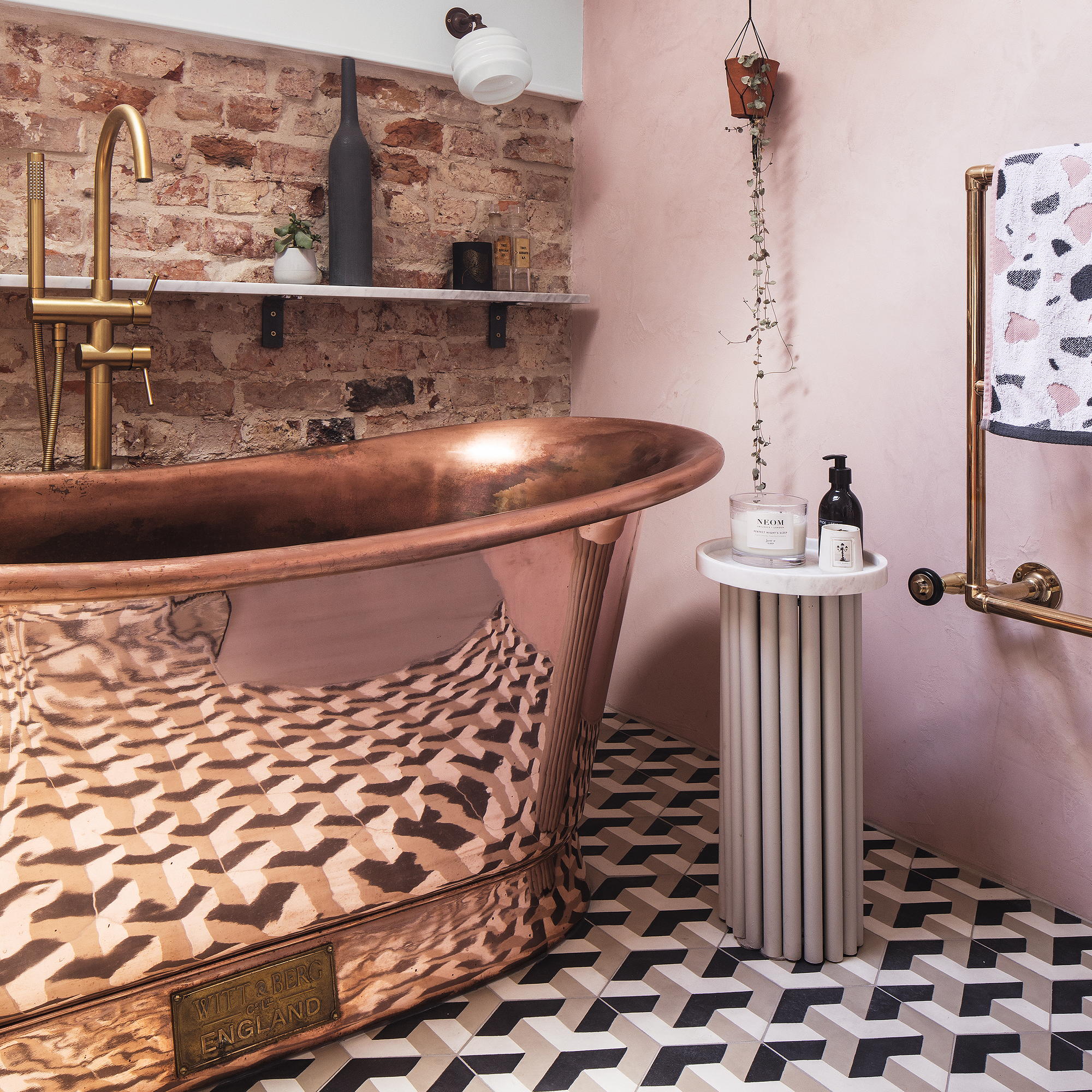
This may one may seem a little obvious, but it's one of the most common bathroom flooring mistakes people make. The last thing you want when the work starts is the disappointing realisation that you haven't got enough materials and the project is going to have to be delayed.
'One of the most common mistakes that people can make when installing flooring in any room is not ordering enough of the flooring to complete the job,' says Christian Roberts, Flooring Expert, MyJobQuote. 'It’s important to measure the room properly, measure it again, and also order an excess of flooring so that you can be sure you don’t run out of materials part way through the job.'
Should bathroom floor be lighter or darker than walls?
'As a general rule of thumb, it’s better for the bathroom floor to be a darker colour than the walls and ceiling,' says flooring expert Christian. 'This ensures that there is a good contrast without making the room seem too dark or compact.'
There are no set rules as to what colour your bathroom floor and walls should be, but if you're working with small bathroom tile ideas, opt for a darker shade on the floor. This will help the walls feel more open and spacious. The other option is to go for the same colour on the walls and floor so that they flow into one another and create the illusion of more space.
'Pale coloured tiles can make a small bathroom look bigger as they reflect more light than darker colours, giving an airy and spacious feel,' says Jo Oliver, Director, The Stone & Ceramic Warehouse. 'Using the same tiles on the walls and the floor will enhance the feeling of space by creating a continuous look.

What is the most low maintenance flooring for bathroom?
When it comes to low maintenance, the general consensus is either porcelain or ceramic tiles, as these are by far the easiest bathroom flooring type to clean.
'When it comes to the bathroom, ceramic tiles are seen as the most low maintenance option,' says Christian. 'These tiles are durable and hard. They won’t scratch or dent and are also resistant to water so you can be sure that they will last for many years.
Ceramic is also resistant to stain, so if you go for a colourful geometric pattern or even white ceramic tiles, you don't need to worry about them showing marks from bleach or other cleaning products. The other popular, low-maintenance choice for the bathroom floor is porcelain tiles.
'Porcelain tiles are both virtually indestructible and stainproof, as well as being impervious to water, making them an ideal solution for bathrooms,' says Jo from The Stone & Ceramic Warehouse. 'They also won’t be damaged by detergents or any of the other chemicals we frequently expose our surfaces too.'
She adds, 'with porcelain floor tiles there is virtually no maintenance required, with no specialist cleaning or treatments needed.'

Katie has been writing freelance since early 2022, specialising in all things homes and gardens, following achieving a Masters in Media and Journalism. She started out writing e-commerce content for several of Future’s interior titles, including Real Homes, Gardeningetc, Livingetc, and Homes and Gardens. Since then she’s been a regular contributor on Ideal Home’s digital team, covering news topics, how-to guides, and product reviews.